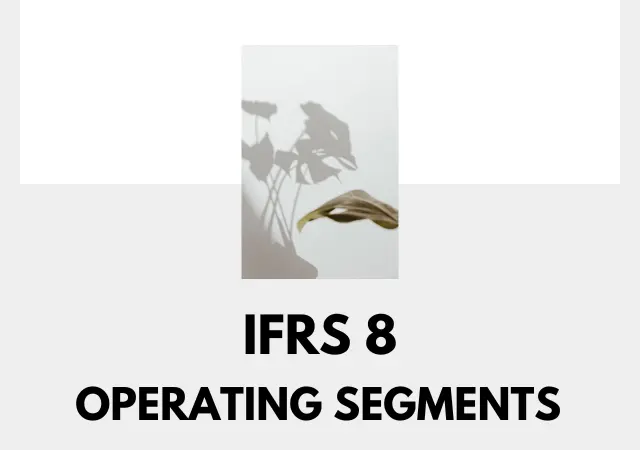The ‘CORE PRINCIPLE’ of IFRS 8 is that an entity shall Disclose information to enable users of its financial statements to evaluate the nature and financial effects of the business activities in which it engages and the economic environment(s) in which it operates.
Table of Contents
IFRS 8 Effective Date
An entity shall apply this IFRS in its annual financial statements for periods beginning on or after 1 January 2009.
Earlier application is ‘PERMITTED’.
If an entity applies this IFRS in its financial statements for a period before 1 January 2009, it shall disclose that fact.
IFRS 8 – Scope
| This IFRS shall apply to: |
|---|
| (a) the ‘Separate or Individual’ Financial Statements of an entity: (i) whose debt or equity instruments are traded in a public market, OR (ii) that files, or is in the process of filing, its financial statements with a securities commission or other regulatory organisation for the purpose of Issuing any class of Instruments in a Public Market; AND |
| (b) the ‘Consolidated’ Financial Statements of a group with a parent: (i) whose debt or equity instruments are traded in a public market, OR (ii) that files, or is in the process of filing, the consolidated financial statements with a securities commission or other regulatory organisation for the purpose of Issuing any class of Instruments in a Public Market. |

Operating Segments
It is a Component of an entity:
- that engages in business activities from which it May earn revenues and incur expenses;
- whose operating results are regularly reviewed by the entity’s ‘Chief Operating Decision-Maker‘; AND
- for which discrete Financial Information is available.
Reportable Segments
An entity shall REPORT Separately information about each ‘Operating Segment’ that:
- has been identified as an ‘Operating Segment’ or results from aggregating two or more of those segments; AND
- exceeds the quantitative thresholds.
1. Aggregation Criteria
‘Operating Segments’ often exhibit similar long‑term financial performance if they have similar economic characteristics.
| Two or more operating segments May-be aggregated into a single operating segment if aggregation is consistent with the core principle of IFRS 8, the segments have similar economic characteristics, and the segments are similar in each of the following respects: |
|---|
| (a) the nature of the products and services; |
| (b) the nature of the production processes; |
| (c) the type or class of customer for their products and services; |
| (d) the Methods used to distribute their products or provide their services; AND |
| (e) if applicable, the nature of the ‘Regulatory Environment‘. |
2. Quantitative Thresholds
An entity shall REPORT Separately information about an ‘Operating Segment’ that Meets any of the following quantitative thresholds:
- Its reported revenue, including both sales to external customers and inter-segment sales or transfers, is 10 per cent or more of the combined revenue, internal and external, of all operating segments.
- The absolute amount of its reported profit or loss is 10 per cent or more of the greater, in absolute amount, of (i) the combined reported profit of all operating segments that did not report a loss; AND (ii) the combined reported loss of all operating segments that reported a loss.
- Its assets are 10 per cent or more of the combined assets of all operating segments.
‘Operating Segments’ that do NOT Meet any of the quantitative thresholds may be considered reportable, and separately disclosed, if Management believes that information about the segment would be useful to users of the Financial Statements.
IFRS 8 – Disclosure
An entity shall disclose information to ENABLE users of its ‘Financial Statements’ to evaluate the nature and financial effects of the business activities in which it engages and the economic environment(s) in which it operates.
Withdrawal of IAS 14
IFRS 8 ‘supersedes‘ IAS 14 (Segment Reporting).
Chartered Accountant (Institute of Chartered Accountants of Pakistan)
Bachelor of Accounting Honours (Asia e University, Malaysia)